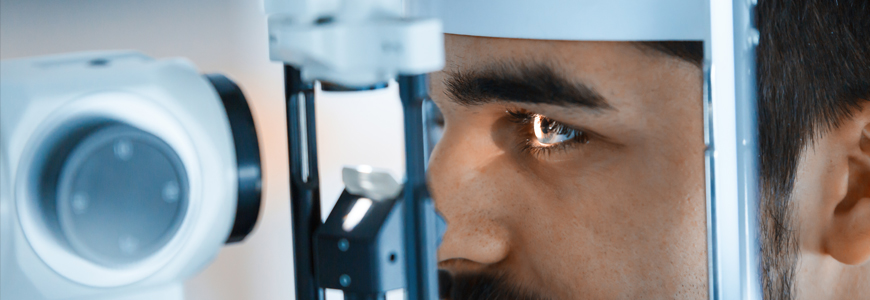To gradually phase out reliance on subjective visual field tests as the leading measure for diagnosis and detection of disease progression in patients with glaucoma, Duke researchers are developing portable systems based on virtual reality and artificial intelligence (AI) to eventually enable remote, in-home testing by patients.
Early diagnosis and intervention can help prevent the irreversible visual loss that occurs in patients with glaucoma who are not monitored regularly, says Felipe A. Medeiros, MD, PhD, director of clinical research for the Duke Ophthalmology Division.
Focusing on the link between glaucoma and brain function, researchers are extending the application of brain-computer interface (BCI) technologies to provide a more precise glaucoma test that will yield consistent results with the help of AI algorithms.
Detection of disease progression with conventional visual field testing may require years of observation and may lead to irreversible loss of function and disability in many patients, Medeiros says. The visual field test relies on patients’ subjective responses to simple light stimuli. Glaucoma specialists have long recognized the limitations of this subjective test that produces variable findings, making it difficult to detect whether changes over time are truly related to disease deterioration.
Medeiros says the test also requires significant patient cooperation, experienced technicians and costly machines and can only be performed in a clinic. As a result, only a few tests are usually performed for each patient over several years. “The proportion of people with glaucoma is increasing significantly as a result of aging,” Medeiros says. “Bringing the number of individuals who need frequent testing into clinics for visual field tests is no longer realistic from a logistical standpoint.”
Glaucoma Testing Research Highlights:
- A project funded by the National Institute of Health (NIH) will assess the overall efficacy of brain-computer interfaces to detect disease progression over time. These brain-computer interfaces integrate virtual reality, AI and objective methods for assessing brain signals in response to visual stimuli, eliminating the need for subjective patient responses. Led by Medeiros, the main purpose of the project is to demonstrate that the BCIs can be used for earlier detection of disease progression leading to more prompt intervention and prevention of irreversible functional loss. The study involves a carefully followed cohort which also undergoes many other imaging and functional tests at his laboratory.
- Using AI to refine the analysis of imaging and visual function tests. In previous research, Medeiros and collaborators have shown that the use of AI algorithms can provide objective metrics to quantify the amount of nerve damage in glaucoma from simple photographs of the optic nerve and from optical coherence tomography.
- Using a technology transfer grant from the NIH, Duke researchers are testing a specific goggle-based device (nGoggle) that presents visual stimuli and uses electroencephalogram to acquire brain signals to detect visual function loss and improve glaucoma assessment. Duke glaucoma specialist Henry Tseng, MD, PhD, is the principal investigator; the commercial partner is NGoggle Diagnostics, San Diego, CA.

